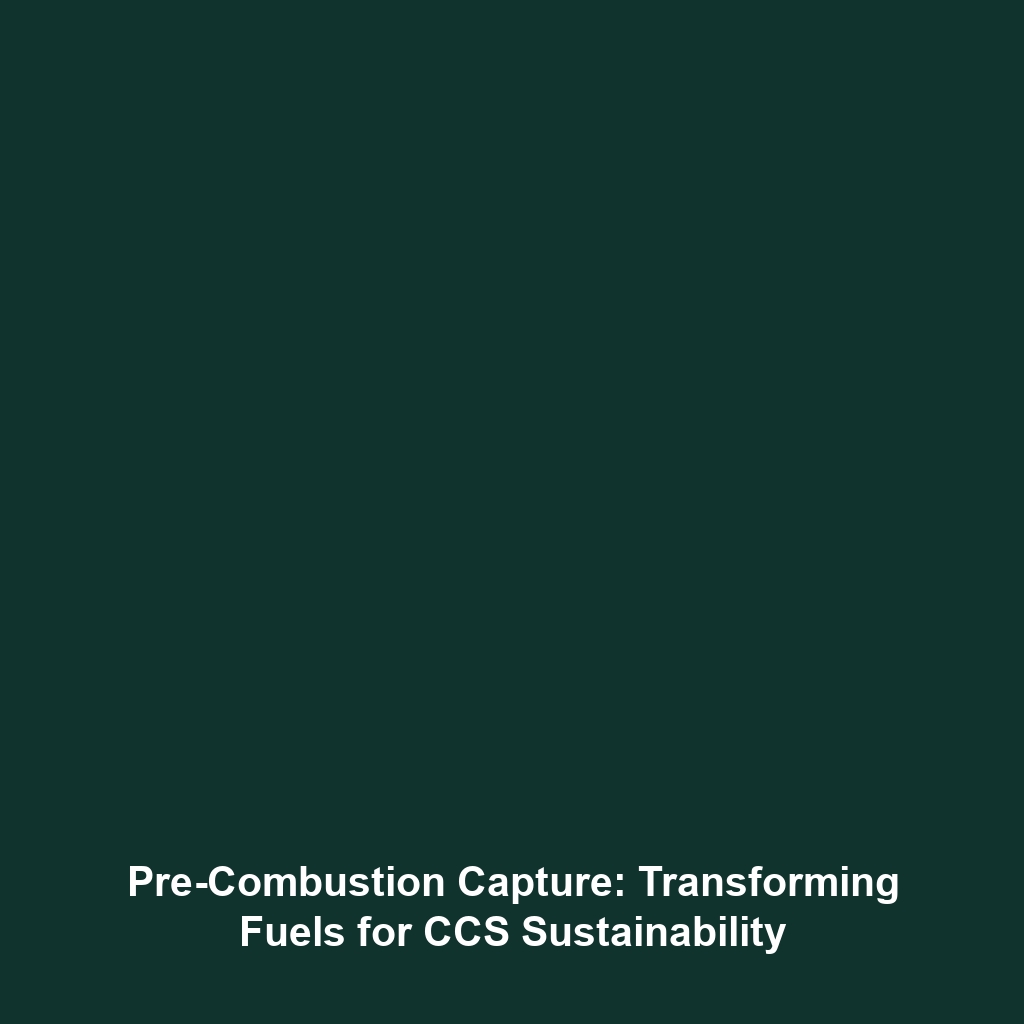What is CCS?: Definition and Overview of the Process
Introduction
Carbon Capture and Storage (CCS) is a vital technological approach aimed at mitigating climate change by capturing carbon dioxide (CO2) emissions and storing them securely to prevent their release into the atmosphere. As global efforts intensify to combat rising greenhouse gas levels, CCS plays a significant role in reducing the carbon footprint of various industries. This article delves into the definition and overview of the CCS process, exploring its significance in the broader context of environmental sustainability and climate action.
Key Concepts
The process of Carbon Capture and Storage (CCS) involves several key stages that are integral to understanding its functionality:
-
Capture
This initial step aims to separate CO2 from other gases produced by industrial processes. Technologies such as pre-combustion, post-combustion, and oxy-fuel combustion are utilized to isolate carbon emissions efficiently.
-
Transport
After capturing CO2, the gas must be transported to a storage site. This is typically done via pipelines, although shipping can be used for long distances.
-
Storage
The final step involves injecting CO2 into underground geological formations, such as depleted oil and gas fields or deep saline aquifers, where it can be stored indefinitely.
Understanding these concepts is essential for grasping how the CCS process fits within the overarching category of Carbon Capture & Storage (CCS).
Applications and Real-World Uses
CCS technology has numerous practical applications across various sectors. Key uses include:
- Power Generation: Coal and natural gas power plants are increasingly adopting CCS technology to cut down on emissions, illustrating how CCS is used in traditional energy sectors.
- Industrial Emissions: Industries such as cement and steel production implement CCS to manage emissions, underscoring its applications in heavy manufacturing.
- Enhanced Oil Recovery (EOR): CO2 captured through CCS is often utilized in EOR processes, showcasing a dual benefit of both storage and extraction in the oil industry.
These examples highlight the crucial role that Carbon Capture & Storage (CCS) plays in reducing emissions across various sectors.
Current Challenges
Despite its potential, several challenges hinder the widespread adoption of CCS technology:
- High Implementation Costs: The initial investments for CCS infrastructure can be significant, posing a barrier for many companies.
- Public Perception: There are concerns regarding the safety and environmental impacts of underground CO2 storage.
- Regulatory and Policy Frameworks: Inconsistent regulations across regions can complicate the implementation of CCS projects.
Addressing these challenges is critical for the future success of Carbon Capture & Storage (CCS) initiatives.
Future Research and Innovations
Research in CCS technology is rapidly evolving, with promising innovations on the horizon:
- Next-Generation Capture Technologies: Enhanced methods for capturing CO2 at lower costs and increased efficiencies are being developed.
- Photocatalysis: Emerging techniques involve using solar energy to convert CO2 into usable products, potentially revolutionizing the CCS process.
- Biological Carbon Capture: New approaches are exploring the use of biological processes to capture carbon, such as algae cultivation.
These advancements indicate a bright future for CCS, with ongoing research expected to lead to breakthroughs that could further enhance its effectiveness.
Conclusion
In summary, Carbon Capture and Storage (CCS) is a critical process in the fight against climate change, offering a pathway to significant emission reductions across various industries. By understanding the definition, processes, applications, challenges, and future directions of CCS, stakeholders can make informed decisions about its implementation. To learn more about related topics, consider exploring our articles on renewable energy and sustainable practices in manufacturing.









